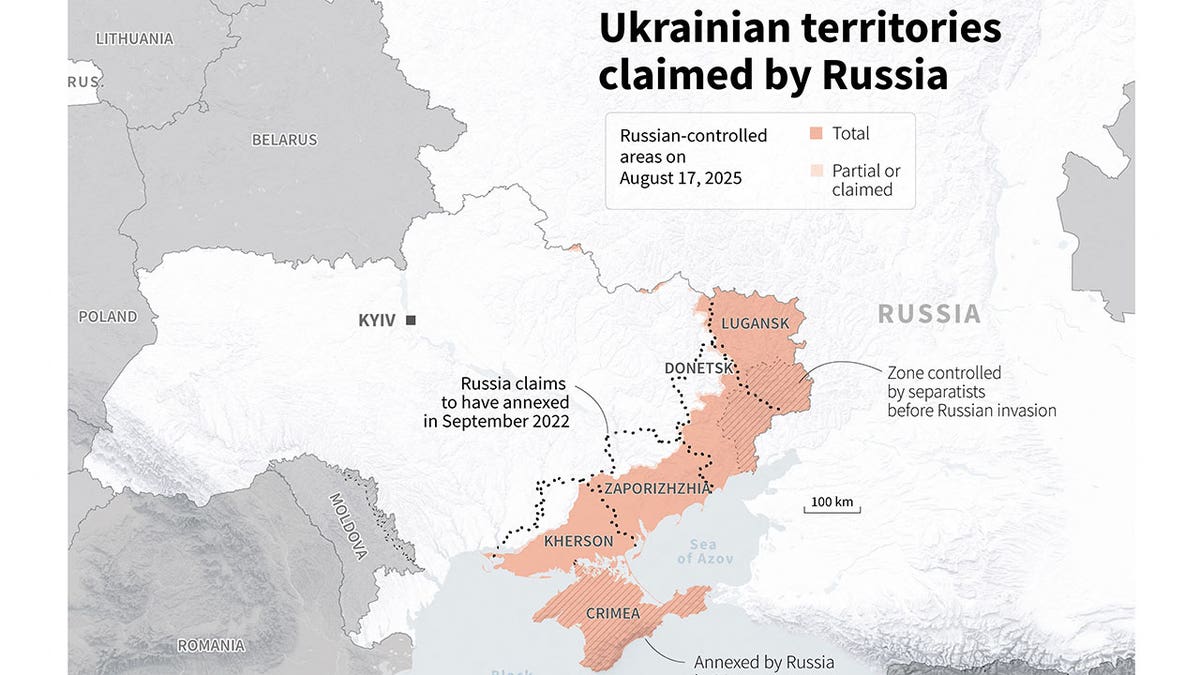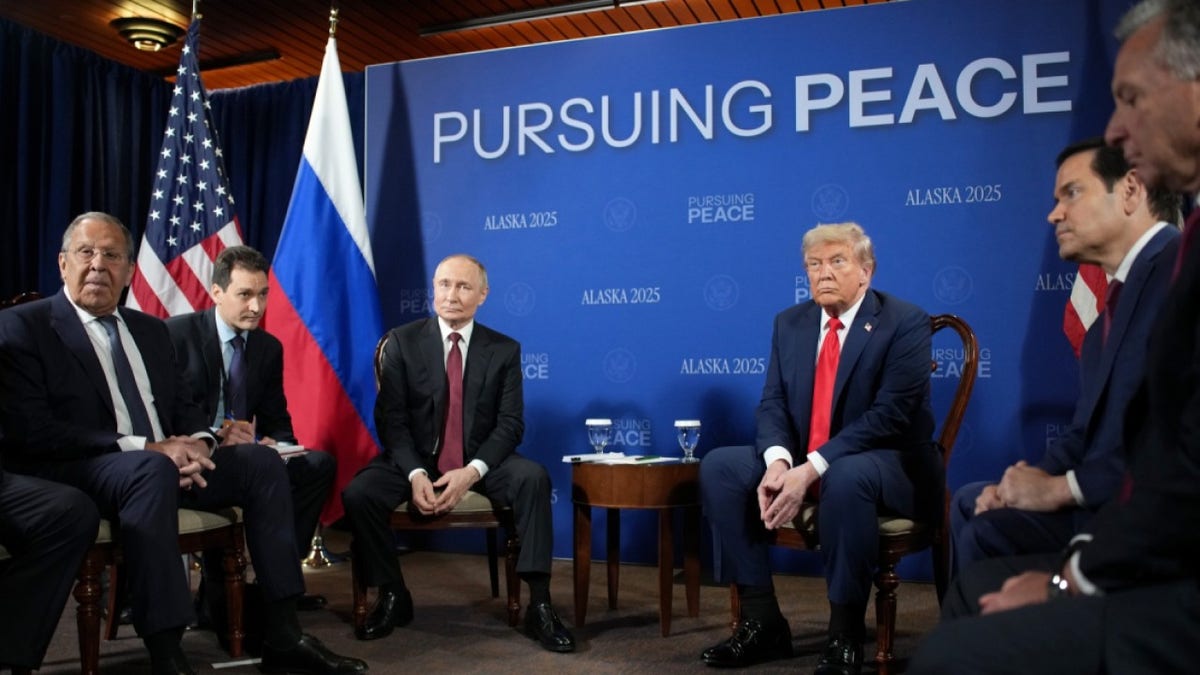Share this @internewscast.com
Russian President Vladimir Putin recently made his conditions known for halting military actions in Ukraine, during a conversation with President Donald Trump in Alaska, as reported on Thursday.
Reports from sources acquainted with the Kremlin’s negotiations indicated that Moscow’s requirements were documented on Friday and submitted to Washington. These include preventing Ukraine from joining NATO, banning Western troops from its territory, and the surrender of the Donbas region, according to Reuters.
The report further detailed that Putin is willing to hold the current front lines in Kharkiv and Zaporizhzhia and return certain areas conquered in the Kharkiv, Sumy, and Dnipropetrovsk regions.

The map illustrates Ukrainian regions claimed by Russia, such as Donetsk, Luhansk, Zaporizhzhia, Kherson, and Crimea (annexed in 2014), along with Russian military advances as of August 17, 2025, based on data from the Institute for the Study of War and AEI’s Critical Threats Project.(Guillermo Rivas Pacheco, Jean-Michel Cornu/AFP via Getty Images)
A senior NATO defense official suggested that Putin’s requests were predictable and expressed a belief that more demands could be forthcoming.
“Whatever helps to stall,” the official, who spoke to Fox News Digital on the condition of anonymity, said.
Russian Foreign Minister Sergey Lavrov caused a stir by stating in a televised interview that Moscow has “never talked about the need to seize any territories.”
Instead, his comments escalated concern that Putin’s ultimate war aim is the control of Kyiv, rather than physical occupation of all of Ukraine, which Russian forces have been unable to achieve.
Lavrov said the Kremlin’s goal is to “protect” Ukrainians from their own government and argued “there can be no talk of any long-term agreements” with Kyiv “without respect” for Russia’s security and the rights of Russian speakers in Ukraine, the Institute for the Study of War reported this week.
“These are the reasons that must be urgently eliminated in the context of a settlement,” Lavrov added.

U.S. President Donald Trump, right, and Russian President Vladimir Putin, left, hold a meeting at Joint Base Elmendorf-Richardson Aug. 15, 2025 in Anchorage, Alaska. (Andrew Harnik/Getty Images)
Concern over Ukraine’s sovereignty and autonomy had been on the rise well before Russia’s 2022 invasion, particularly after the outbreak of massive protests in Belarus following the alleged 2020 re-election of President Alexander Lukashenko, a major ally of Putin who has essentially extended Belarus as a puppet state to Russia.
Unease mounted in 2021 when Putin wrote an essay arguing that Ukraine, as well as Belarus, shouldn’t exist independently of Russia. By the end of the year, security experts were sounding the alarm that Putin intended to invade Ukraine.
The White House did not immediately respond to Fox News Digital’s questions.

















